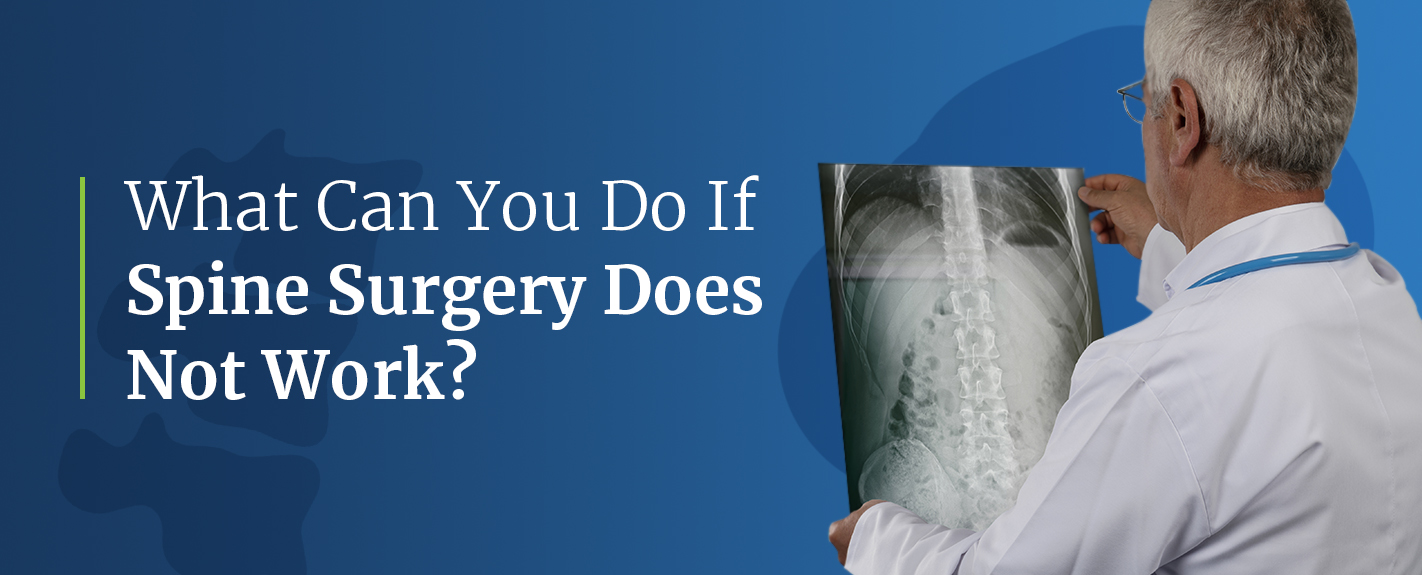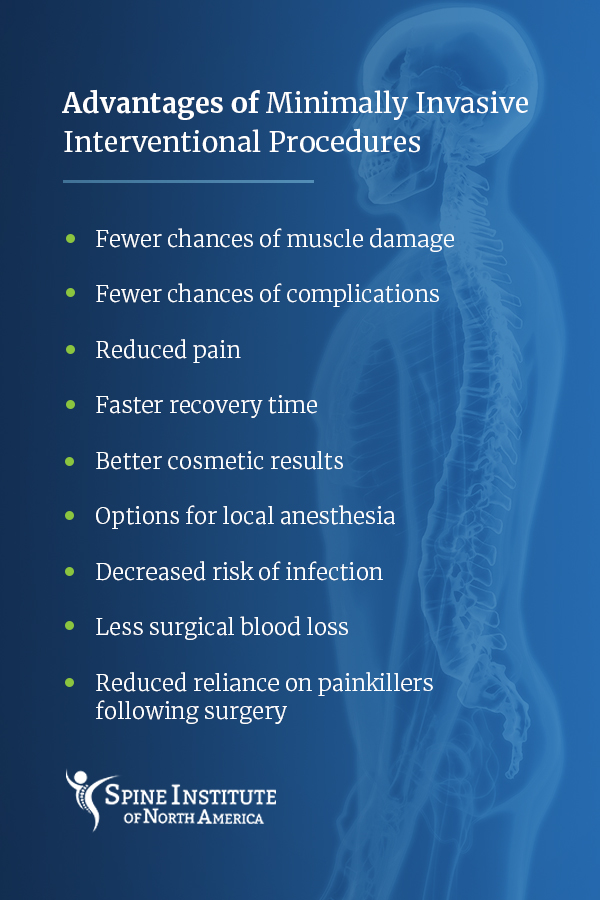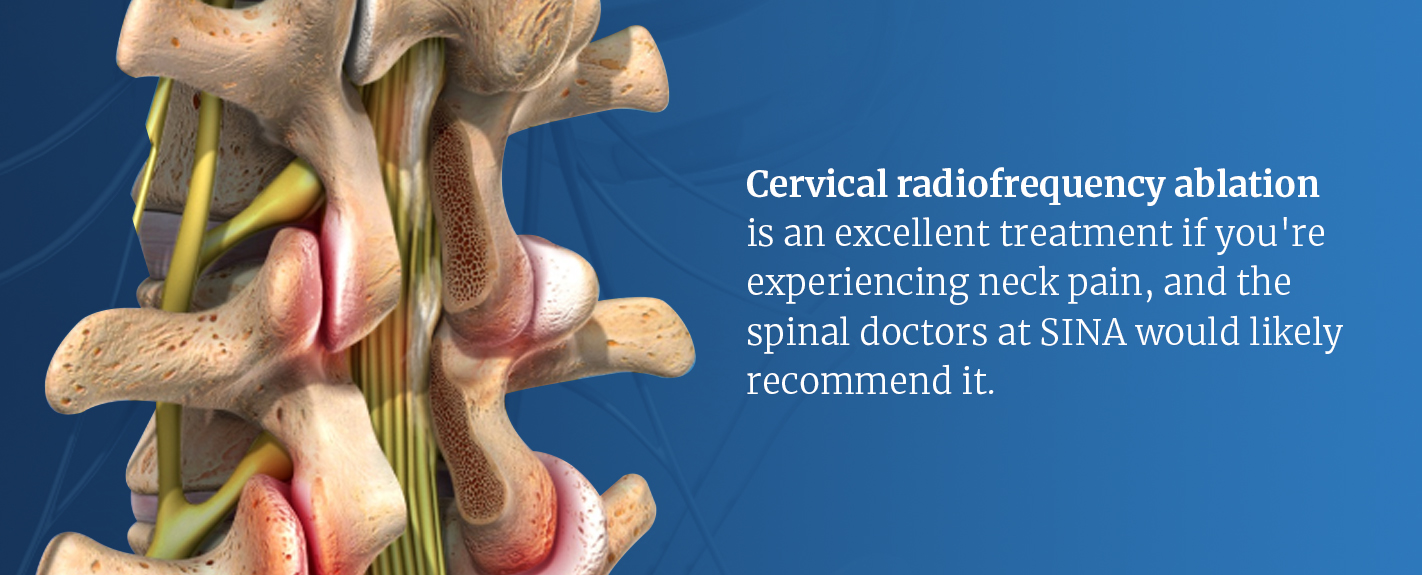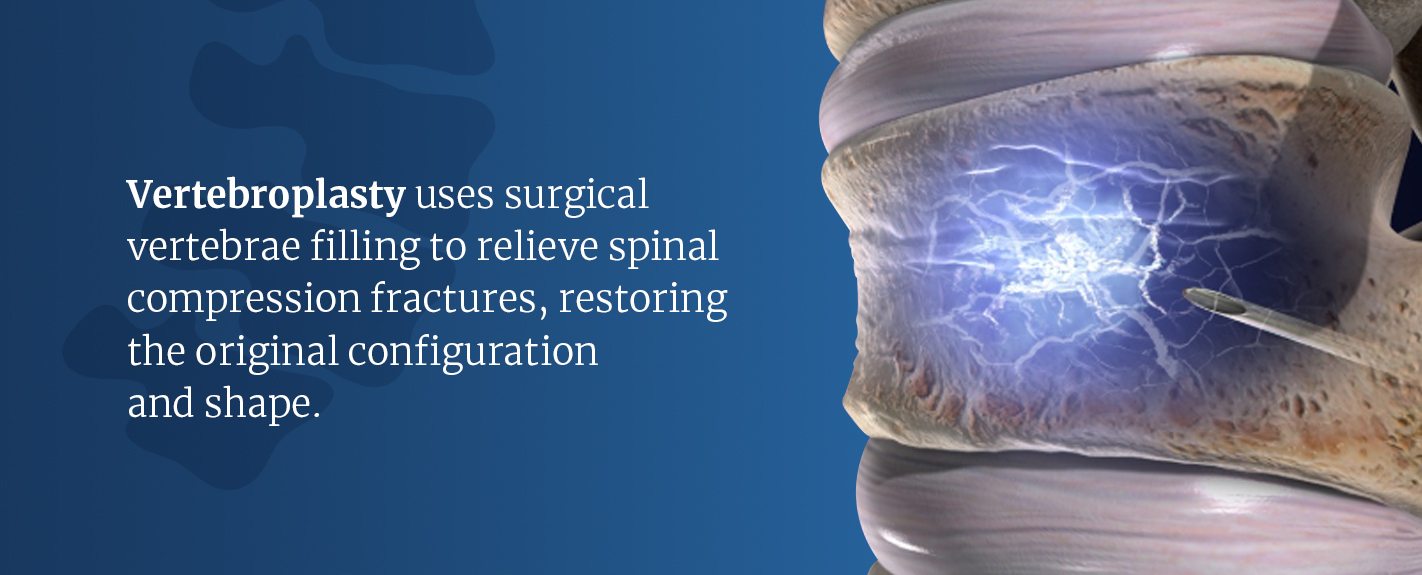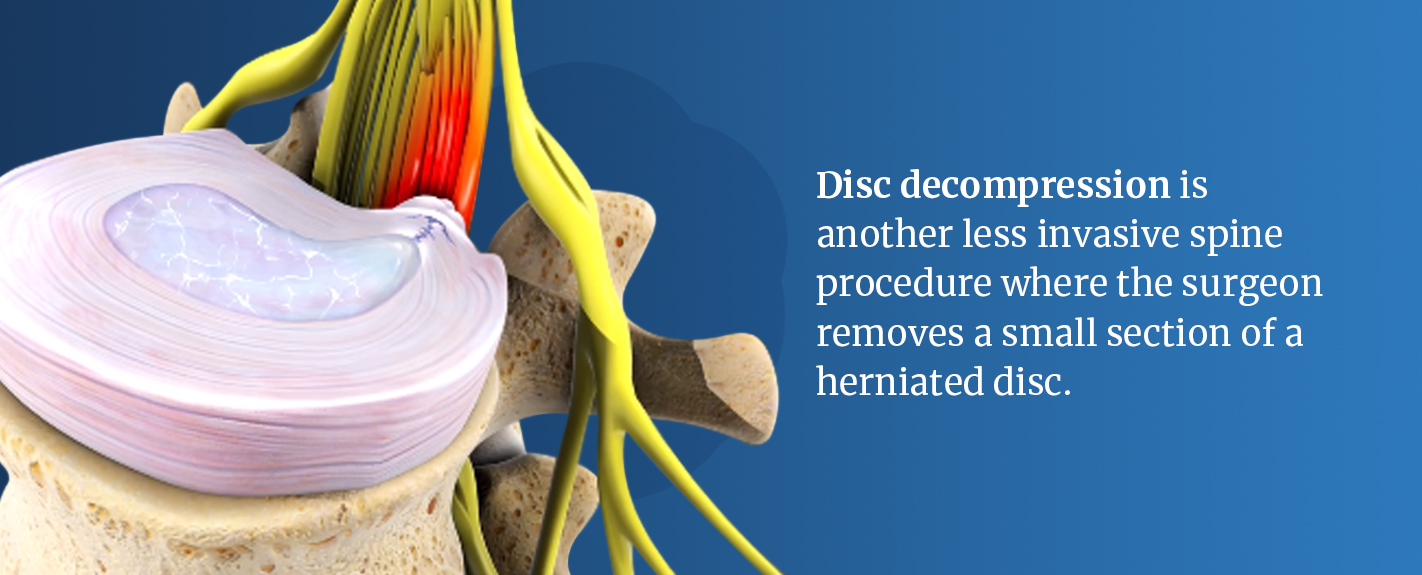If you’re struggling with back pain, you may be asking yourself, “Is back surgery worth it?” and “What is the success rate for spinal surgery?” According to a 2016 review published in the Journal of Pain Research, up to 75.6% of lower back spine surgeries don’t relieve pain completely, signifying a 25.4% spinal or back surgery success rate.
What Is the Treatment for Failed Back Surgery Syndrome?
Failed back surgery syndrome, or FBSS, occurs when you live with persistent pain after having back surgery. You can experience this pain in your back, legs or both. FBSS can become a complex condition very quickly.
Since there’s no real cure for FBSS, the picture is unfortunately bleak. Doctors may often recommend a second surgery known as revision surgery. However, this will depend on several things, including:
- What type of pain you’re experiencing after your original surgery
- What type of surgery you originally had
- Other factors
Around 13 to 35% of individuals who undergo back surgeries end up having to have revision surgery, according to the review above.
But, sometimes even the revision surgery can fail and won’t relieve your symptoms. If this happens, the surgeon may recommend yet another invasive surgery. As the review indicates, repeated surgical procedures not only rack up the medical costs, but with each consecutive surgery, your chances of satisfactory results diminish.
Fortunately, there are less invasive interventional procedure options available to you instead of traditional spine surgery.
What Is Minimally Invasive Surgery for the Spine?
Minimally invasive surgery (MIS) has transformed spine surgery significantly and is seeing tremendous growth. You may find MIS is the more superior option over traditional open spine surgery due to it being less invasive and requiring smaller incisions.
The goal of MIS, in general, is to stabilize the spinal joints and vertebral bones and relieve the pressure placed on the spinal nerves — usually due to conditions like:
- Bone spurs
- Spinal instability
- Scoliosis
- Herniated discs
- Spinal tumors
Advantages of Minimally Invasive Interventional Procedures vs. Traditional Spine Surgery
Minimally invasive surgical methods, as opposed to open spine surgery, can be safer, quicker and lead to less recovery time. Because of the decreased soft tissue and muscle trauma, compared to open surgeries, you could experience benefits like the following.
- Fewer chances of muscle damage: In open spinal surgery, the surgeon pulls muscles aside in the affected area. Doing so can lead to soft tissue and muscle damage, as well as more pain following the surgery. MIS procedures don’t require the surgeon having to pull the muscles aside to the same degree, which leads to less of a risk of soft tissue damage around the surgical area.
- Fewer chances of complications: The surgeon needs to make a long incision in traditional spine surgery to get at the affected spine area, resulting in a greater risk of complications. MIS procedures require only a few small incisions, leading to a reduced risk of infections at the surgical area, excessive bleeding and other complications.
- Reduced pain: Traditional open spine surgery can lead to a significant amount of pain and discomfort afterward because of the longer incision the surgeon needs to make. MIS procedures usually cause less discomfort and pain afterward, leading to a shorter hospital stay. When you experience less pain, it can also reduce how many painkillers you need following surgery.
- Faster recovery time: Traditional surgery typically leads to longer recovery times, particularly if your muscles in the area surrounding the surgery site became damaged during the surgery. MIS techniques often have shorter recovery times because the surgeon uses smaller incisions that don’t affect the surrounding soft tissue and muscles as much.
- Better cosmetic results: The skin incisions are smaller, often as small as two centimeters, so they will heal with more discreet scarring.
- Options for local anesthesia: Some surgeons perform MIS procedures as outpatient surgeries and use only local anesthesia. Therefore, there’s less chance of an adverse reaction from general anesthesia.
- Decreased risk of infection: Large incisions like with open spinal surgery and soft tissue damage can increase your risk of infection. While MIS could pose some complications, as with any procedure, some studies show a decreased infection rate with MIS when compared to open spinal surgery.
- Less surgical blood loss: A frequent concern with open spinal surgery is perioperative blood loss, which often requires surgeons to perform an allogeneic transfusion. MIS procedures reduce surgical trauma, which results in reduced surgical blood loss.
- Reduced reliance on painkillers following surgery: Because there is less surgical trauma with MIS, there’s typically less post-operative pain, reducing your need for pain medication following your procedure.
What to Do If Spine Surgery Does Not Work
There is some good news in all this, though. There are different pain management treatment options you can choose as an alternative to spine surgery. These treatment options are the least invasive procedures that can help eliminate or alleviate your pain and its impact. Some of these alternative pain management treatment options, which Spine INA (Spine INA) offers, are as follows.
1. Lumbar Radiofrequency Ablation
Lumbar radiofrequency ablation disrupts the sensory signals to your facet joint. It surgically removes your nerves using thermal energy. After the surgeon applies a local skin anesthetic to your back, they’ll guide a needle to your transverse process bone using fluoroscopy x-ray. They’ll position the needle over your bone where your nerves tend to be. They’ll then deliver thermal energy, creating a lesion on your nerve, thereby interrupting the pain signal.
Benefits of this treatment are:
- Local anesthesia
- Same-day procedure
- No incision on the skin
- No recovery time — you could go back to work the next day
- Least-invasive procedure
- Pain relief lasting up to 18 months
To determine if you’re a good candidate for this procedure, the doctor performs a medial branch nerve block, helping confirm where the pain is coming from and providing relief. If you don’t receive any pain management results following this nerve block, you aren’t a candidate for this procedure.
2. Cervical Radiofrequency Ablation
Cervical radiofrequency ablation is an excellent treatment if you’re experiencing neck pain, and the spinal doctors at Spine INA would likely recommend it. It’s effective on spasms and pain in both your shoulder and neck. It works by heating your nerve using a radio wave to reduce its ability to sense pain. The surgeon performs tests ensuring the ablation therapy will only target your nerves that create the pain sensation.
You may be a candidate for this treatment if you’ve responded well to cervical epidural injections. The procedure is safe and offers less risk of complications and a higher chance of reducing your pain effectively.
Benefits of this treatment are:
- Minimally invasive
- The surgeon can target exact areas causing your neck and shoulder pain
- Performed as an outpatient procedure
- Shorter recovery time, often only a few days
- Higher rate of positive results
- Doesn’t require general anesthesia
- Higher likelihood of reduced or total pain relief
The surgeon will administer a nerve block to begin the diagnosis process to let them know if your neck pain qualifies you as a good candidate for this procedure. It shows them where your pain is coming from, so they’ll know exactly where they need to target the ablation therapy to provide you with maximum neck pain relief. If you don’t experience relief from the nerve block, this therapy won’t be an ideal treatment for you.
3. Kyphoplasty
Kyphoplasty helps relieve spinal compression fractures. It uses a surgical vertebrae filling, restoring the original configuration and shape. It’s a minimally invasive spinal procedure option. The surgeon inserts a needle using the guidance of an x-ray to target your back’s damaged vertebra. They’ll then inflate a balloon into your compression fracture and fill it with bone cement.
Benefits of this treatment are:
- Fast return to work
- Local anesthesia
- Restores function
- Least invasive procedure
- Return home the same day
- Decreases pain and your reliance on medicine
This MIS has a 90% success rate, and you’ll likely experience pain relief within 48 hours of your surgery, allowing you to return to your normal activities.
4. Vertebroplasty
Vertebroplasty also uses surgical vertebrae filling to relieve spinal compression fractures, restoring the original configuration and shape. It’s a similar MIS procedure to kyphoplasty. However, it uses a different product for addressing instability caused by spinal compression fractures. The surgeon inserts a needle also under the guidance of x-ray to target your damaged back vertebra. They’ll insert the bone cement directly into your damaged bone.
Benefits of the vertebroplasty treatment are:
- Resume work and normal activities quickly
- Uses local anesthesia
- Minimally invasive procedure
- Go home the same day as your procedure
- Pain reduction and reduced reliance on medication
- Restores spinal function
This procedure also has a 90% success rate, providing you with a positive outcome within 48 hours.
5. Spinal Cord Stimulator
You can experience pain relief through mechanical stimulation. The spinal cord stimulator procedure is an effective and safe method, allowing you to be pain-free and medicine-free. Spine INA offers several device options to provide the best care for your needs.
Benefits of this treatment are:
- Local anesthesia
- Same-day procedure
- Minimally invasive procedure
- Great outcomes
- Shorter recovery time and you can usually return to work in a few days
- Reduced or total relief from pain
Many individuals who undergo this therapy report experiencing 50 to 70% pain reduction.
6. Disc Decompression
Disc decompression is another less invasive spine procedure where the surgeon removes a small section of a herniated disc that’s agitating your spinal nerve and leading to leg or back pain. You undergo local anesthesia in this procedure.
The surgeon anesthetizes your skin with lidocaine and inserts a small needle cannula under x-ray fluoroscopy to the herniated disc. The Dekompressor, which is a motorized device, has a rotating tip the surgeon inserts into the cannula. After turning this device on, it drills and extracts a small section of the disc, thereby decompressing the disc and providing pain relief.
Benefits of this treatment are:
- Fast return to work
- Local anesthesia
- Restores function
- No incision
- Go home the same day of the procedure
- No scarring
- Relief of back pain
- Reduced reliance on medicine
- Minimally invasive procedure
To see if you are a good candidate for this procedure, you would need to take a pain evaluation questionnaire through Spine INA, and have a member of the team follow up with you.
7. Endoscopic Rhizotomy
Endoscopic rhizotomy is one of the least invasive procedures and gives our physicians a way to visualize the nerves that connect your brain to the pain signal of the muscles in your back. During this procedure, patients are given a local anesthetic and an incision of about 1/4 inch will be made. This means your recovery period will take only a few weeks, and you’ll be able to return home within an hour after the completion of your procedure.
You may want to schedule an endoscopic rhizotomy if you suffer from:
- Muscle spasms
- Chronic back pain
- Failed back surgery
- Facet Joint Syndrome
- Facet related arthritis
- Chronic low back pain
- Pain when leaning backward but not forward
You can take a pain evaluation questionnaire to see if you may be a good candidate for endoscopic rhizotomy.
8. Pain Management Injections
There are several pain management injections to help relieve your pain.
- Lumbar epidural steroid injection: The doctor injects a lidocaine and steroid anesthetic under fluoroscopy x-ray while you remain under conscious sedation. After the lumbar epidural steroid injection, if your pain diminishes, the doctor can tell where your pain originates.
- Lumbar facet joint injection: This injection helps the doctor pinpoint the cause of your back pain to provide substantial relief from inflammation and pain.
- Lumbar sympathetic nerve block: If the doctor suspects a potential abnormality on your MRI or x-ray, they might try a nerve block to help them confirm where your pain is coming from and the area of your spine affected. They’ll use an anesthetic like lidocaine or numbing medicine.
- Cervical facet joint injection: The doctor uses this injection for diagnosing pain you’re experiencing in your upper back, neck and shoulders. It also helps diagnose some headache pain. The surgeon performs this injection on an outpatient procedure.
- Cervical sympathetic nerve block: The doctor uses this procedure for discovering if your sympathetic nerves are causing the pain in your neck, shoulders or arms. If you’re experiencing pain in your shoulders, arms or hands, they might suggest a stellate ganglion block test.
- Cervical epidural steroid injection: By injecting a steroid into the cervical epidural area around your spinal cord, the doctor can help relieve your pain and inflammation. It can reduce swelling and pain in your shoulders, arms and neck.
- Sacroiliac joint injection: The doctor mainly uses this injection for diagnosing and providing lower back pain relief and, in some cases, sciatica symptoms.
- Caudal epidural steroid injection: The doctor injects an anesthetic like lidocaine and steroid through your spine and into your epidural space where you have irritated and inflamed spinal nerves. They use the injection to treat back and neck pain.
- Trigger point injection: The doctor injects common trigger points of inflammation and spasms in your muscles. Your rhomboid and trapezius muscles in your back are common trigger point locations.
- Discography: Discography is another injection method the doctor uses to identify which discs in your spine are causing your pain.
Contact Spine INA for the Least Invasive Alternative to Back Surgery
Spine INA has a team of medical professionals committed to finding and relieving the cause of your back and spine pain. We know the effect back pain can have on the quality of your life, and how it can keep you from being able to participate in various activities you enjoy.
You can trust your back and spine is in the capable and experienced hands of a team of board-certified spine specialists. We use the least invasive spine and back procedures that offer you lasting, effective relief. There are several alternative procedures to open spine surgery, and we’ll sit down with you to go over your options and see which one is best for you. Contact our office today to set up your consultation for your minimally invasive alternative to back surgery.
This content was medically reviewed by Baher Yanni, M.D, on October 24th, 2019.
Sources:
https://www.ncbi.nlm.nih.gov/pmc/articles/PMC4716715/
https://www.verywellhealth.com/fbss-why-does-back-surgery-fail-4105394
https://www.aans.org/en/Patients/Neurosurgical-Conditions-and-Treatments/Minimally-Invasive-Spine-Surgery
https://spineina.com/treatments/endoscopic-spine-procedure-overview/endoscopic-rhizotomy/
